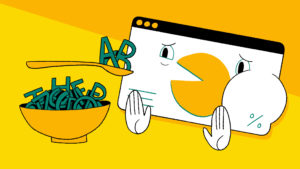What do sociology, magic and kickass creative presentations have in common?
Let’s start off with a little story.
As a student, the German sociologist Max Weber (1864-1920) sat in a classroom listening to his professor prattle on about some theory that left him thoroughly unimpressed. In fact, he was so unimpressed that he read 40 volumes of the German poet Goethe’s oeuvre in secret, during the lessons!
Weber went on to write about the sociology of magic and his disenchantment theory sought to explain why the world had become so benign, boring and basic. Over a century later and people are still sitting through lectures and presentations with as much enthusiasm as the young Weber had.
But why is it that many presentations don’t live up to their potential? Let’s look at 5 ways to help you create a truly creative presentation.

1. Give the Presentation Life
Weber’s disenchantment theory basically contrasted the modern and pre-modern world. In essence, he was describing how the world had lost its magic – everything had become a science. So how does this apply to crafting creative presentations?
When approaching a creative presentation, you have to think of it as your partner. After all, you’re working together with the presentation to get your message across. This is where Weber’s theory comes into play. Pre-modernity was characterised by animism. In a nutshell animism is when inanimate objects are treated as if they have souls. Way back then this would be anything from rocks to wine, but maybe it’s time we start looking at our creative presentations in the same way.
Take a look at how we wished our clients a transformative 2022:
A creative presentation’s materials have soul – they’re alive and intelligent, not just a tool. This may sound like crazy mysticism, but the following example will show you why. Say we have two presentations: in the first, the speaker has a powerpoint that they just use to show some text and maybe the odd photo. A fine, average presentation where the attention span fully depends on the presentation skills of the speakers themselves. In the second presentation, the speaker approaches their powerpoint like a living being – a character in the play that is their presentation. What follows is a dynamic interchange between speaker and powerpoint. The powerpoint is designed creatively to react to what the speaker says, and the speaker reacts to the powerpoint in turn.
This is a creative presentation to remember.

2. Engage the Audience Creatively
The interaction doesn’t just stop there though. Think about ways of bringing your audience to life too. Quizzes and questions pointed at the public can be a good way of making them a character in the same play, but you can take it even further:
For our Picture This events, we use live illustrators to turn a discussion between experts into a fresco full of drawings that help clarify what is being said. Our illustrators listen along and whenever important concepts or phrases are brought up, they turn them into cartoons that help focus the attention, explain what is being said and commit these concepts to memory. In that sense, a creative presentation is like theatre, and even the audience has a part to play.
Treating your presentation materials as if they had a soul is an amazing way of making your presentation interesting and dynamic. But what if we went one step further? What if your presentation could speak for itself?

3. Say No to Unnecessary Text in Presentations
Weber’s story of sitting in a classroom, bored, may remind you of certain moments from your college days. Specifically the terrifying announcement you’d get at the start of the year: ‘you have to learn the slides too’. As soon as you would hear these words, you knew exactly what to expect. Some professors just seemed to think that each slide was the perfect opportunity to reveal their latest novel. Especially during the exams, one could feel like a prisoner whose walls were not made of brick and stone, but of texts and – if you were very lucky – the occasional, low-resolution graph.
The point is: text is to be used strategically and only when needed. Not only do walls of text defeat a powerpoint’s purpose of making things understandable, it also makes the whole presentation feel dry and dead.
So how do we bring life to powerpoints and create a truly creative presentation?
Illustrations, meaning situational videos and cartoons, replace the need for these walls of text. The audience is a lot smarter than we often give them credit for, and most people are capable of making big leaps when understanding illustrations and what they mean.
For instance, if you find yourself in the supermarket and see a sign with a piece of bread on it, you understand that it’s pointing towards the bakery, not some kind of exhibition of a slice of bread. While barely taking up any space, you know everything you need to.
Furthermore, illustrations help the speaker underline and enforce what is being said – making it all easier to understand for your audience. People won’t remember that one highlighted term three paragraphs down and to the right in the 17th slide of a 100-piece powerpoint. What they will remember is the amazing drawing that clearly and succinctly explained everything they needed to know about chlorophyl, the Fibonacci sequence or Beethoven’s 5th, in a fun and cartoonish way. Also, don’t be afraid to use animations like videos or GIFs.

4. Make it Personal!
Don’t worry, we’re not suggesting you plaster your deepest secrets for the whole world to see, but any presentation you give should be distinctly yours. You should aim for metaphors, analogies and wording that speak to your personality. Think about it: When you come out of an amazing creative presentation, you want to think: ‘wow, nobody else could have given that exact presentation’. Additionally, integrate your branding, whether that means using your company’s style and colours, or your own personal flair. This helps you bundle all your content, whether they be speeches, e-learning courses or video series in one, coherent package: you!
Let’s go back to Max Weber’s theory of disenchantment for a second. The German theorised that the magic of a world where everything was alive gave way to a hyper-scientific universe, where everything that couldn’t be seen or empirically tested was false. This was coupled with the ever-expanding spectrum of new sciences. First, physics, chemistry and biology were split up (they used to be bundled together as ‘natural philosophy’). Then we started applying the same scientific methods to humans – leading to psychology, sociology, anthropology and economy. If we could find out the truth about all these things, then couldn’t we also figure out practical things? Like, how to run the perfect business? Or the very best way to communicate to an audience? And just like that, the business and communication sciences came into existence.
Ok, phew. A big, short historical overview of science. But what can it tell us about making creative presentations uniquely personal?
Let’s try to make a pre-modern presentation. There is no perfect way of giving a presentation, and even these tips are meant to inspire you to experiment with your own special way of presenting. Forget the strict formats and guidelines. Forget the cookie cutter questions and games.
Tell your story.
Make reference to who you are, to what interests you and what you know and care about. Think about it: you’d rather listen to an excited speaker talk about a topic you know nothing about, than a boring presentation that could have been given by anyone. There’s no science or formula that can fake passion.

5. Use Subtext
All too often, speakers are afraid of subtext. They’re (understandably) afraid of losing their audience’s attention and so they write everything down on the slide and don’t want to be too experimental or exciting. But this all has exactly the opposite effect – they lose their audience through boredom. So how do you avoid staring out into the sea of faces during your presentation and seeing 50 percent of the audience working their way through the 27th volume of Goethe’s collected works? How do you capture their attention and keep them engaged?
The power of fantasy. Yes, the audience’s imagination is your friend. More specifically, using subtext. Your slides should be suggestive. They should act as a catalyst or spark that brings the audience’s imagination to life.
How do we do this?
When covering a topic, think about what you’re trying to achieve. Sometimes you need to get very specific information across and so you need to spell things out, but sometimes you want to give your audience a taste of a certain topic. 70 percent of the work that goes into getting someone interested in your topic happens between their ears. In the end, it’s the audience member that decides whether something is interesting or not. Get their brains working by kicking their imagination into overdrive. This can involve exciting metaphors, thought experiments and strange examples.
Making your talk more visual with a live drawing or illustrated powerpoint has three main effects: it becomes easier to understand, it becomes more memorable and, most importantly, it demands the audience’s attention. No matter how simple the drawing, your audience’s brains will immediately start analysing every line, curve and colour of the picture. In a second, they’ll work out what it means, its relation to your presentation and what it adds. You don’t need to spell it out, because your audience’s imagination will do all of that for you.
Making your slides suggestive excites and kick-starts your audience’s learning process and fuels their imagination, making them remember your creative presentation.

Re-enchantment of the world
It’s time to go back in time for a while and start thinking about creative presentations in a pre-modern way; to an era where the world was truly magical. By harnessing just a bit of this magic into your presentations, Powerpoints, materials, videos and courses, you can give truly creative presentations and hopefully stop your audience from reading German literature while you’re speaking, or at least force them to read something less depressing than Goethe’s The Sorrows of Young Werther.
Still not sure about how to get started?
Find out how Cartoonbase has helped SNCF make their conferences bold and memorable with live drawings.
And how we helped Club Med share the results of a survey in a funny, engaging way.
Get in touch to see how we can help you, too.
Illustrations by Sergio Menéndez
Written by Jonathon Mayes
